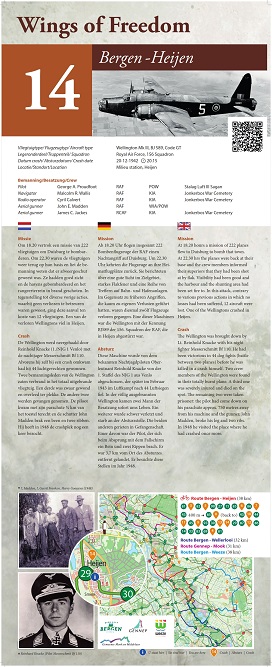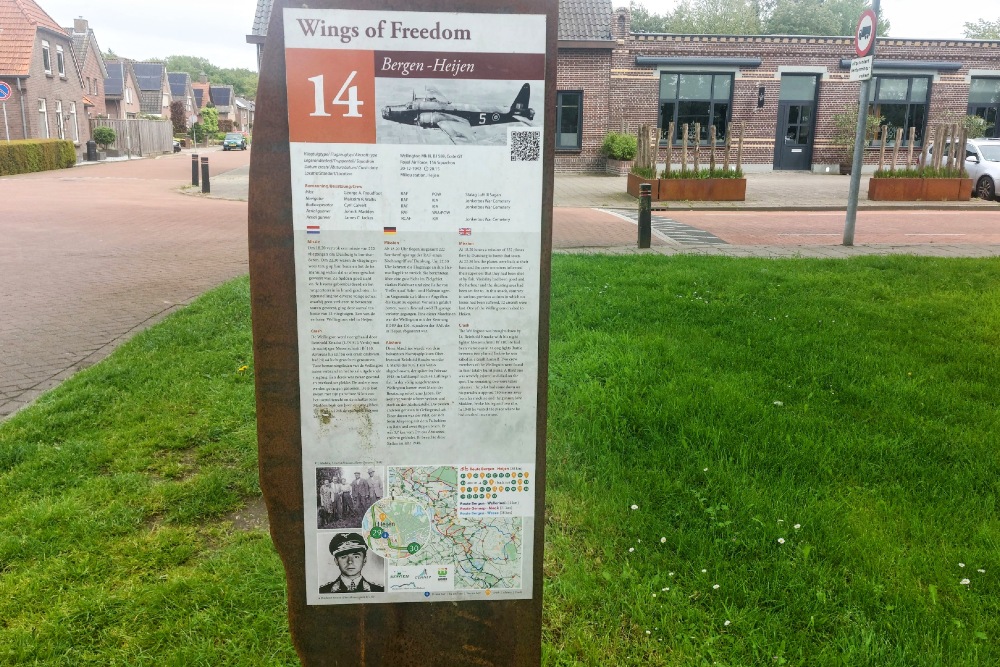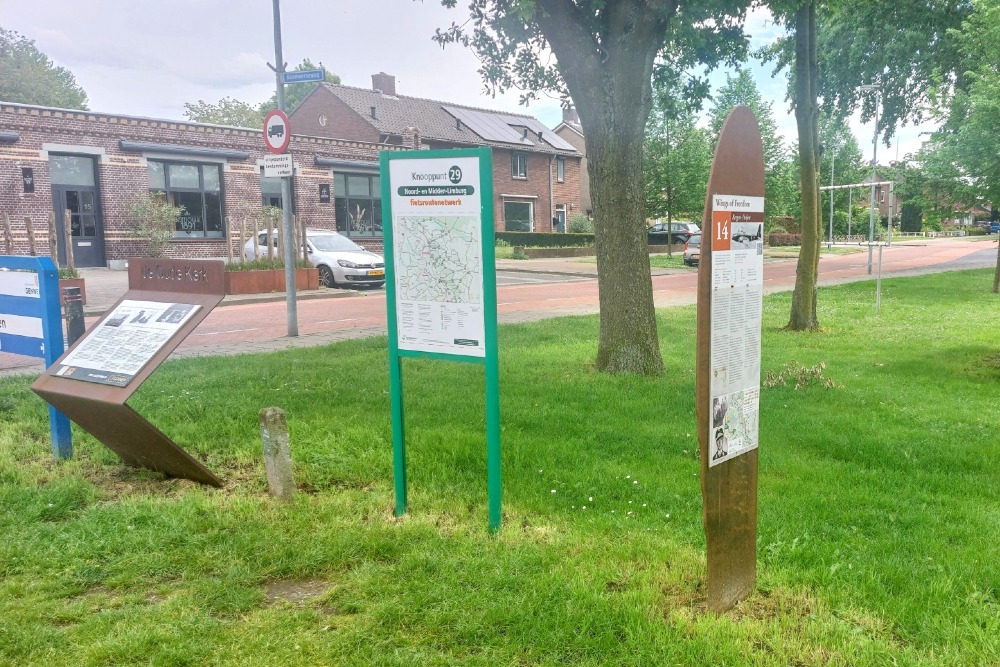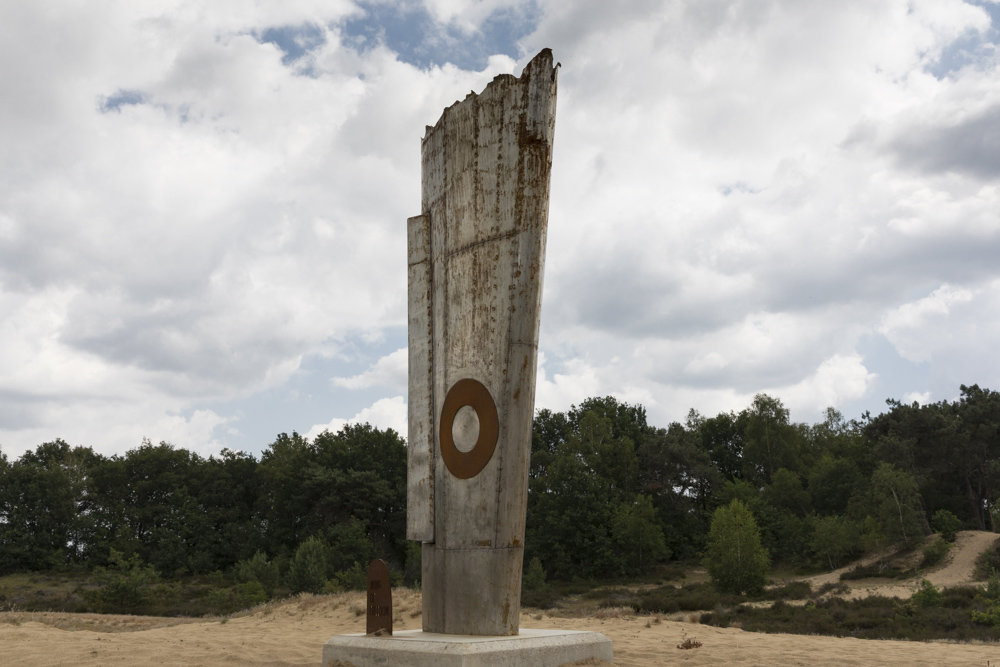Cycle Route Wings of Freedom: Crash Site Wellington Mk III, BJ 589, Code GT
At 18.20 hours a mission of 222 planes flew to Duisburg to bomb that town. At 22.30 hrs the planes were back at their base and the crew members informed their superiors that they had been shot at by flak. Visibility had been good and the harbour and the shunting area had been set fire to. In this attack, contrary to various previous actions in which no losses had been suffered, 12 aircraft were lost. One of the Wellingtons crashed in Heijen.
The Wellington Mk III, BJ 589 was brought down by Lt. Reinhold Knacke with his night fighter Messerschmitt Bf 110. He had been victorious in 44 dog fights (battle between two planes) before he was killed in a crash himself. Two crew members of the Wellington were found in their totally burnt plane. A third one was severely injured and died on the spot. The remaining two were taken prisoner: the pilot had come down on his parachute approx. 750 metres away from his machine and the gunner, John Madden, broke his leg and two ribs. In 1948 he visited the place where he had crashed once more.
Crew members:
Pilot George A. Proudfoot RAF POW Stalag Luft III Sagan
Navigator Malcolm R. Wallis RAF KIA Jonkerbos War Cemetery
Radio operator Cyril Calvert RAF KIA Jonkerbos War Cemetery
Aerial gunner John E. Madden RAF WIA/POW
Aerial gunner James C. Jackes RCAF KIA Jonkerbos War Cemetery
The crash took place at the coordinates: 51.680322, 5.980229.
In collaboration with the municipalities of Bergen, Gennep, Mook-Middelaar and Weeze, the initiative was created for cycling routes 'Wings of Freedom' along crash locations.
In the four municipalities, 28 crash sites have been definitively confirmed. Near each crash site is a memorial sign with information about the cause of the crash. Using the network of cycling nodes, there are four routes of approximately 30 - 40 km. deployed along these places.
Do you have more information about this location? Inform us!
Source
- Text: Werkgroep Wings of Freedom
- Photos: Werkgroep Wings of Freedom (1), Peter Schipper (2, 3, 4)
- Vliegtuigcrashroute Wings of Freedom
Nearby
Museum
- Museum "Van Postzegel tot Tank" - Groeningen
- Royal Air Force Museum Airport Weeze - Weeze
- Exposition 40-45 - Blitterswijck
Point of interest
- Cycling Route Maashees - Camp on the Heath - Maashees
- Castle Bleijenbeek - Afferden
- Cycling Route Maashees - Bunkers Maaslinie - Maashees
Monument
- Cycle Route Wings of Freedom: Central Memorial - Nieuw Bergen
- Memorial Gerardus G.H. Derks - Afferden
- Maria chapel - Maashees
Cemetery
- Dutch War Graves Venray - Venray
- Dutch War Graves Roman Catholic Cementery Blitterswijck - Blitterswijck
- Dutch War Grave Roman Catholic Cemetery Wellerlooi - Wellerlooi
Remembrance Stone
- Stumbling Stones Leeger-Weezer-Weg - Goch
- Stumbling Stone Hinterm Engel 20 - Goch
- Stumbling Stones Voßstraße 12 - Goch









